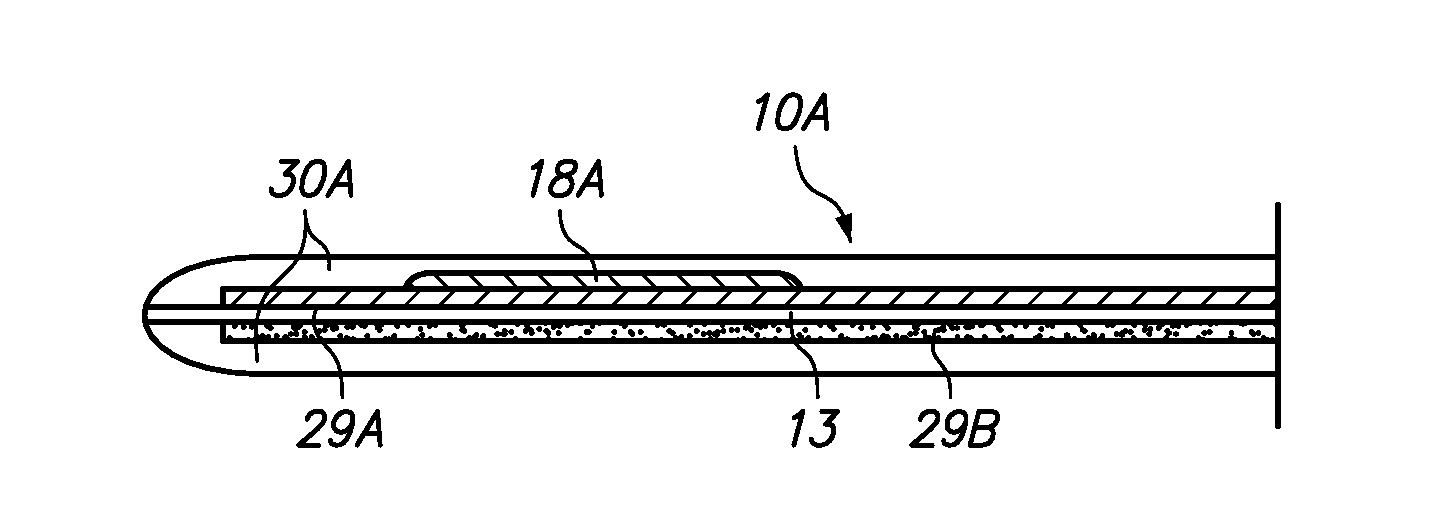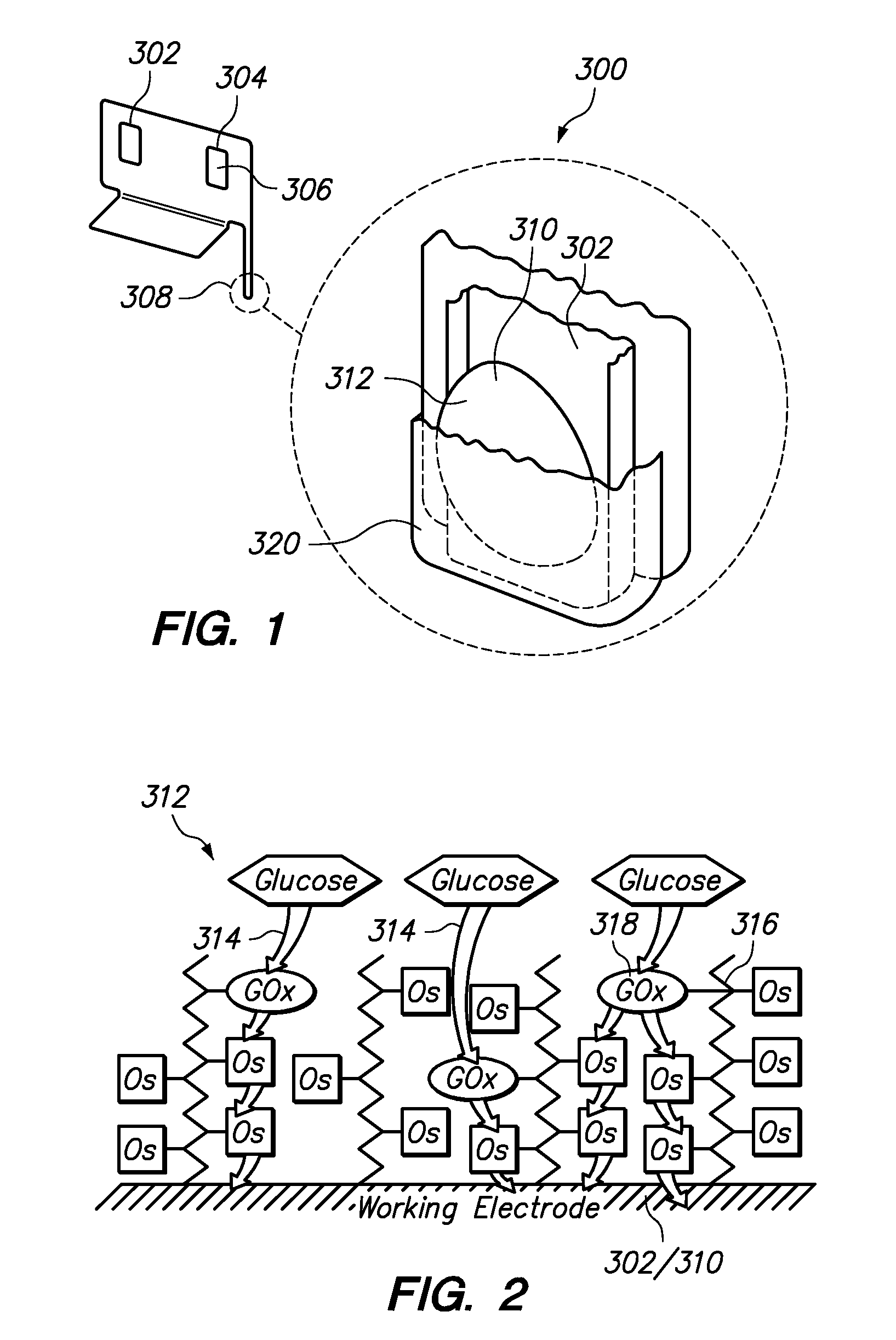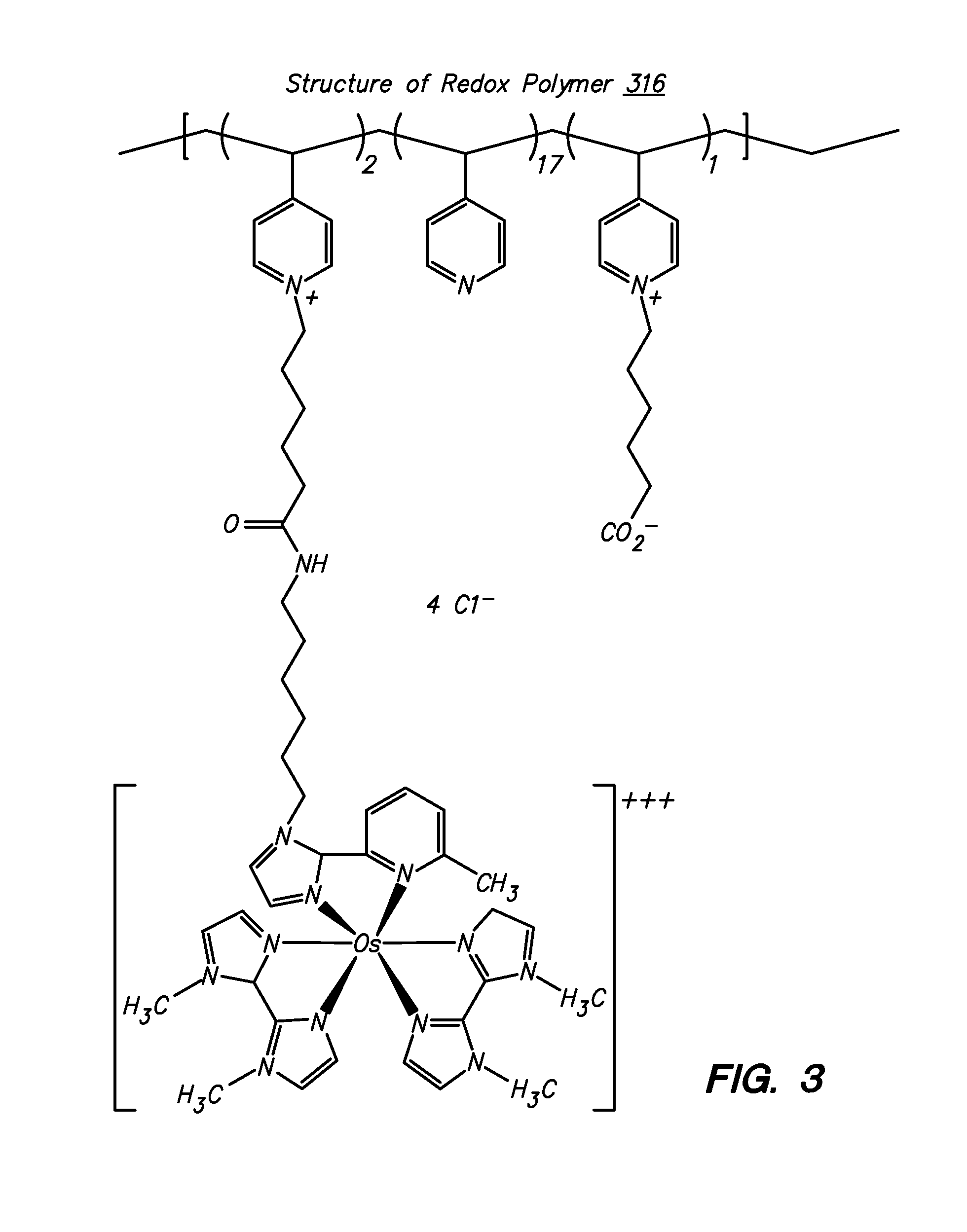Redox polymers for use in analyte monitoring
- Summary
- Abstract
- Description
- Claims
- Application Information
AI Technical Summary
Problems solved by technology
Method used
Image
Examples
example 1
Synthesis of 4-(5-carboxypentyl)amino-2,2′-bipyridyl
[0134]This example illustrates how a carboxy reactive group is introduced onto a 2.2′-bipyridyl derivative.
[0135]Synthesis of compound D: To compound C (formed from A and B according to
Wenkert, D.; Woodward, R. B. J. Org. chem. 48, 283 (1983)) (5 g) dissolved in 30 mL acetic acid in a 100 ml round bottom flask was added 16 mL acetyl bromide. The yellow mixture was refluxed for 1.5 h and then rotovaporated to dryness. The resulting light yellow solid of D was sufficiently pure enough for the next step without further purification. Yield: 95%
[0136]Synthesis of compound E: To a stirred suspension of compound D in 60 mL CHCl3 was added 12 mL PCl3 at room temperature. The mixture was refluxed for 2 h under N2 and then cooled to room temperature. The reaction mixture was poured into 100 mL ice / water. The aqueous layer was separated and saved. The CHCl3 layer was extracted three times with H2O (3×60 mL) and then discarded. The combined aq...
example 2
Synthesis of a 4-((6-Aminohexyl)amino)-2,2′-bipyridine
[0139]
[0140]This example illustrates the general synthesis of a 2,2′-bipyridyl with an amine reactive group.
[0141]Synthesis of compound H: A mixture of compound E (2.5 g) and 1,6-diaminohexane (15 g) in a 250 mL round bottom flask was heated under N2 at 140° C. in an oil bath for 4-5 h. Excess 1,6-diaminohexane was removed by high vacuum distillation at 90-120° C. The product was purified by a silica gel column, eluting with 5% NH4OH in isopropyl alcohol. Yield: 70%.
example 3
Synthesis of 1,1′-dimethyl-2,2′-biimidazole
[0142]This example illustrates the synthesis of 2,2′-biimidazole derivatives.
[0143]The alkylation step can be carried out stepwise so two different alkyl groups can be introduced. For example:
[0144]Synthesis of compound K: To a stirred solution of compound J (formed from 1 according to Fieselmann, B. F., et al. Inorg. Chem. 17, 2078 (1978)) (4.6 g, 34.3 mmoles) in 100 mL dry DMF in a 250 ml round bottom flask cooled in an ice / water bath was added in portions NaH(60% in mineral oil, 2.7 g, 68.6 mmoles). After the solution was stirred at 0° C. for one more hour under N2, methyl toluenesulfonate (10.3 mL, 68.6 mmoles) was added in small portions using a syringe over 30 min. The stiffing of the solution in the ice / water bath was continued for 1 h and then at room temperature for 3 h. The solvent was removed by vacuum distillation. The dark residue was triturated with ether and then suction filtered and dried under vacuum. The product was purifi...
PUM
| Property | Measurement | Unit |
|---|---|---|
| Structure | aaaaa | aaaaa |
Abstract
Description
Claims
Application Information
 Login to View More
Login to View More - R&D
- Intellectual Property
- Life Sciences
- Materials
- Tech Scout
- Unparalleled Data Quality
- Higher Quality Content
- 60% Fewer Hallucinations
Browse by: Latest US Patents, China's latest patents, Technical Efficacy Thesaurus, Application Domain, Technology Topic, Popular Technical Reports.
© 2025 PatSnap. All rights reserved.Legal|Privacy policy|Modern Slavery Act Transparency Statement|Sitemap|About US| Contact US: help@patsnap.com



